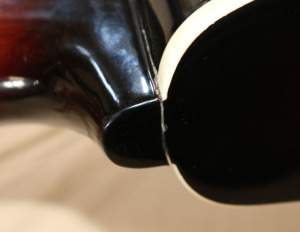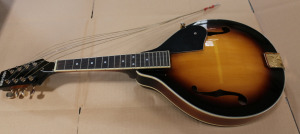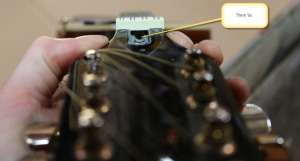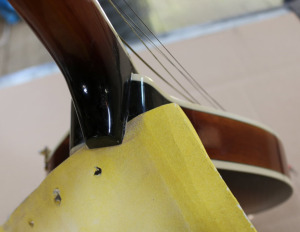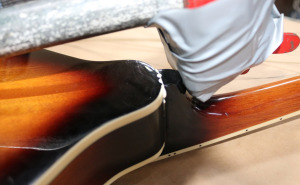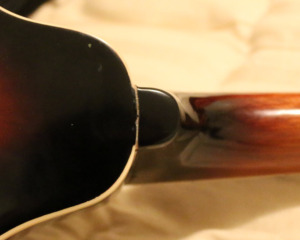Oakridge TM60VS mandolin repair
Dec 15
I own a few musical instruments. I take the approach that if a kid can reach them, they’re fair game. Because I reckon they should be used, and I don’t use my own enough. That only applies to my own instruments, mind you, not the ones I’ve borrowed.
At some point in the past (a couple of years ago now) the neck of my mandolin started to separate away from the body. I don’t know if a kid did it or if it was me (I have given it a couple of clumsy bashes over the years). I got it repaired professionally around a year ago, but it never really looked quite right to me, and over the last few months it’s started to come away again, and was affecting tuning.
So I figured I’d give it a go myself.
I have no idea what I’m doing, so take this as a “let this be a lesson to you” post. That said, it’s back together and sounds good, but I’m not confident I’ve solved the underlying problem any better than the first repair did.
Here’s the before shot:
First up, stripped it down:
Then take the torsion bar cover off. “Torsion bar?” Yeah, it has a bar running down the neck underneath the fingerboard, which can be used to compensate for a bow in the fingerboard. I only knew that because there was a piece of paper that came with the mandolin saying so.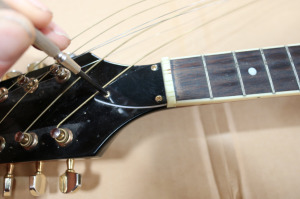
Here’s the adjustment on the torsion bar. It takes a 4mm hex key:
Cleaning the joint of the old glue and roughing up the timber to give the glue a good surface to bond to, using sandpaper:
At this point I adjusted the torsion bar to get a feel for what exactly it did, so I could manipulate the neck to open it up as far as possible to get glue in as far as possible, and then be able to readjust it to enable me to clamp the joint without stressing the torsion bar. It’s not rocket science – you turn it one way and it bows one way, you turn it the other way and it bows the other way.
Then glue in the joint (I used Titebond III), and a sash clamp across the body. I padded the metal clamps with layers of cardboard and duct tape (hey, I’ve got other things to do as well).
Cleaned off the excess glue with a wet cloth, left it clamped for about 27 hours, then put it back together.
I left the torsion adjustment as I’d set it, just to try it out. Interestingly it’s now got a more mellow sound. My daughter described it as a ‘cleaner’ sound. I also wound the bridge height adjustment down and that seems to have made it more mellow again. It was quite loud mandolin but I think it’s lost some of the volume as well. I can’t see how the torsion bar adjustment alone would do that, but I guess by putting the strings closer to the sound board it could have dropped some volume. Or maybe it hasn’t got softer at all (as evidenced by my wife’s protest when I picked it up at bedtime) and it’s just more mellow.
The joint itself looks to me like the glue has already stretched half a mm or so, since putting the tension back on the strings. So I’ll just wait and see.
I did rough up a very quick mandolin neck-to-body screw (i.e. I invented a monstrosity), but I scared myself out of using it – so far. If this joint opens up again, I’ll do something like this for the next repair:

I chickened out this time around, but if it doesn’t hold, I’ll pre-drill the timber and use a screw with a deep thread and a little head to give some added ‘bite’.

